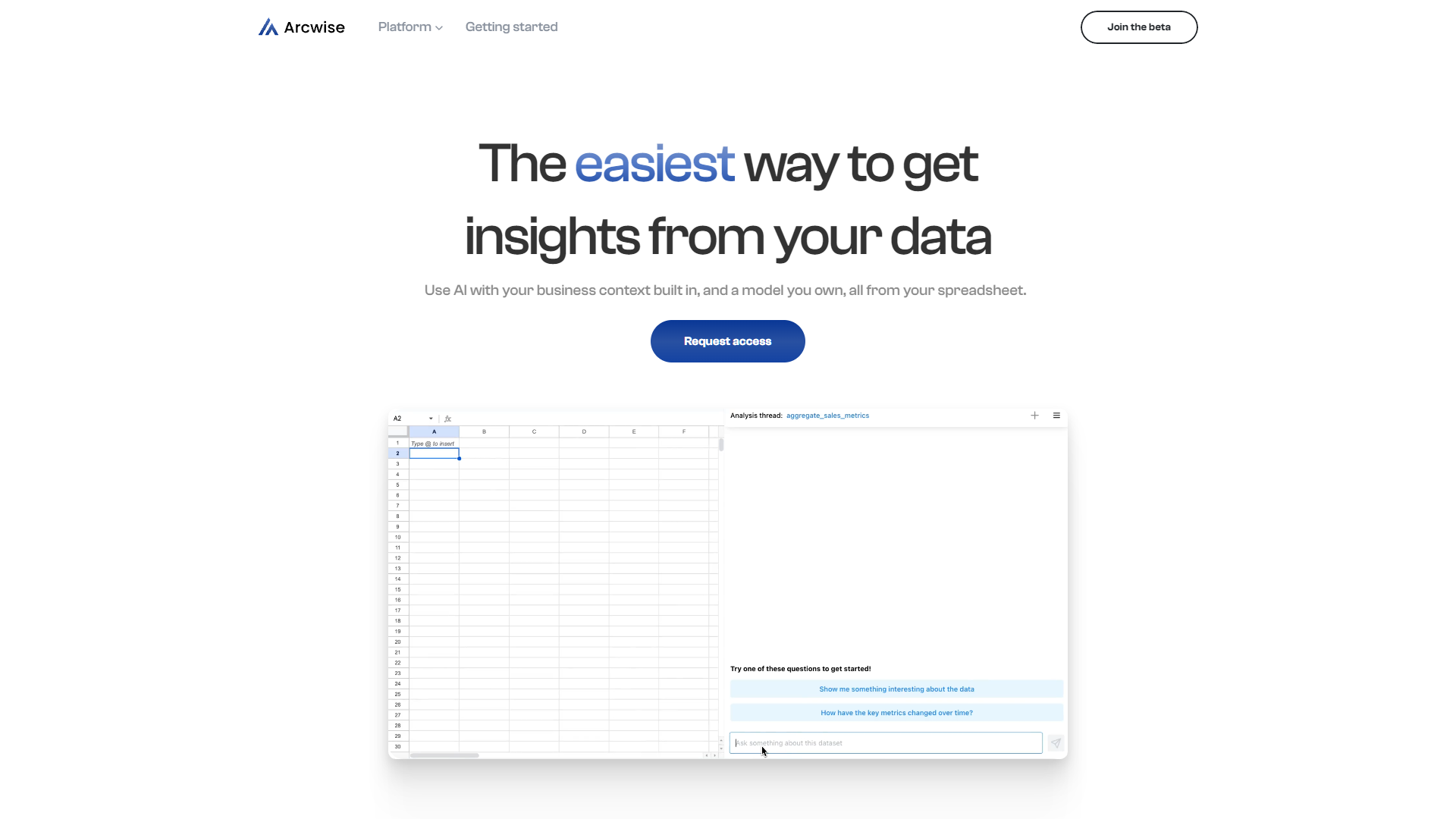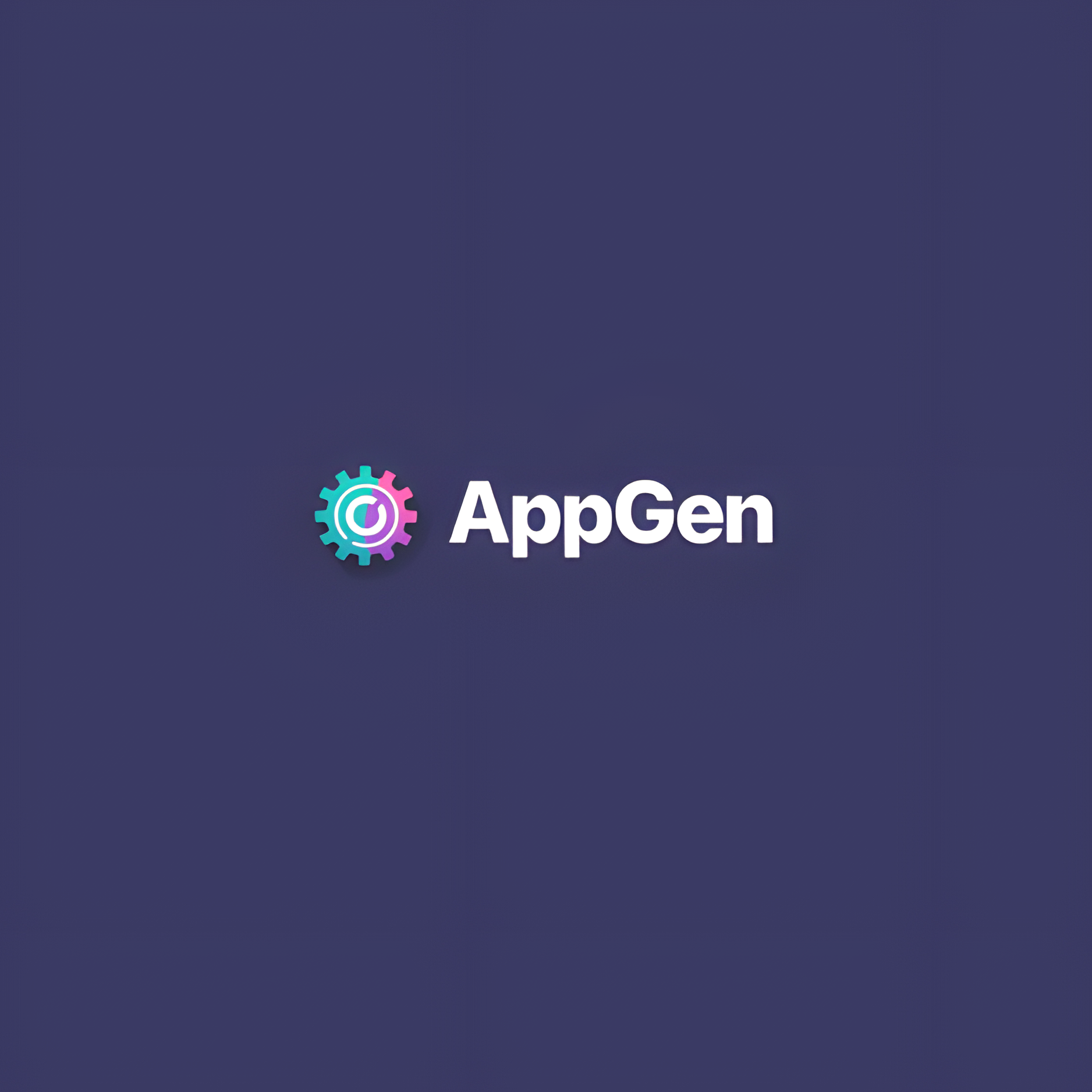Overview
Arcwise AI revolutionizes data analysis by integrating advanced AI capabilities directly into Google Sheets, streamlining the way businesses handle data. This powerful tool enables users to effortlessly create reports, visualize data, and gain deep insights into complex datasets. With Arcwise AI, accessing dashboards and data stacks becomes straightforward, allowing users to pose questions and instantly receive detailed analyses on statistics and trends.
A standout feature of Arcwise AI is its flexible AI model management. Users can either import their own models or opt for custom-built ones, with opportunities to train or fine-tune these models to suit specific data needs. The platform also provides valuable feedback on model performance, ensuring optimal outcomes.
Getting started with Arcwise AI is simple. Users need to connect their data warehouse, integrate their BI tools, and install a Chrome extension for seamless operation within Google Sheets. This setup enables them to start querying their data using AI-generated SQL queries, creating tables and comprehensive reports effortlessly.
Endorsed by professionals like Fanny Peng, who praises its efficiency and the enhancement of work quality, Arcwise AI is designed to empower teams, foster proactive decision-making, and boost profitability, all through a user-friendly interface that simplifies complex data tasks.
Key features
- Integrated Google Sheets: Arcwise AI seamlessly integrates with Google Sheets, allowing users to analyze data and generate reports directly within their spreadsheets.
- Interactive dashboards: Users can easily access and customize dashboards to visualize data trends, ask questions, and get real-time answers to improve decision-making.
- Code generation: Simplifies the coding process by automatically generating the necessary code to explore and visualize data, making it accessible for non-technical users.
- Model management: Offers tools to easily create, train, or fine-tune AI models, with feedback on model performance to ensure optimal results.
- AI-driven insights: Enables users to input queries and receive AI-generated SQL queries, tables, and comprehensive reports, enhancing productivity and data understanding.
- User-friendly interface: Designed with a simple, intuitive interface that makes advanced data analysis accessible to users of all skill levels.
 Pros
Pros
- Scalable architecture: The platform is built to handle large datasets and complex analytics, ensuring reliable performance as your data needs grow.
- Real-time collaboration: Allows multiple users to work on the same dataset simultaneously, facilitating teamwork and faster decision-making.
- Advanced security features: Protects sensitive data with robust security protocols, including encryption and multi-factor authentication.
- Customizable alerts: Users can set up personalized notifications for specific data changes or milestones, keeping them informed in real-time.
- Multi-platform support: Compatible with various operating systems and devices, ensuring accessibility and convenience for all users.
 Cons
Cons
- Google Sheets dependency: Requires constant internet connectivity to access and manipulate data in Google Sheets, limiting offline capabilities and data accessibility.
- Dashboard complexity: While customizable, the dashboards can become complex and overwhelming for users not familiar with data analytics principles.
- Limited code customization: The auto-generated code may not meet specific advanced requirements or preferences of experienced developers seeking deeper customization.
- Model training resources: Intensive computational resources are needed for training AI models, which might affect performance on less capable hardware.
- Query specificity required: Users must input specific queries to generate accurate SQL queries and reports, which could be challenging for those unfamiliar with database terminology.

















